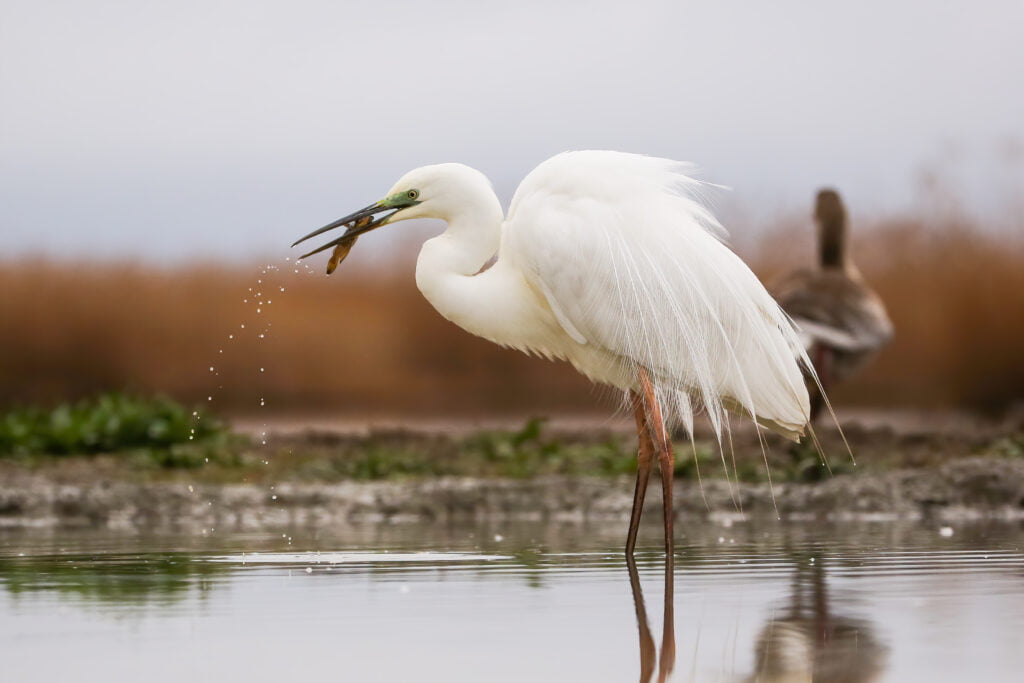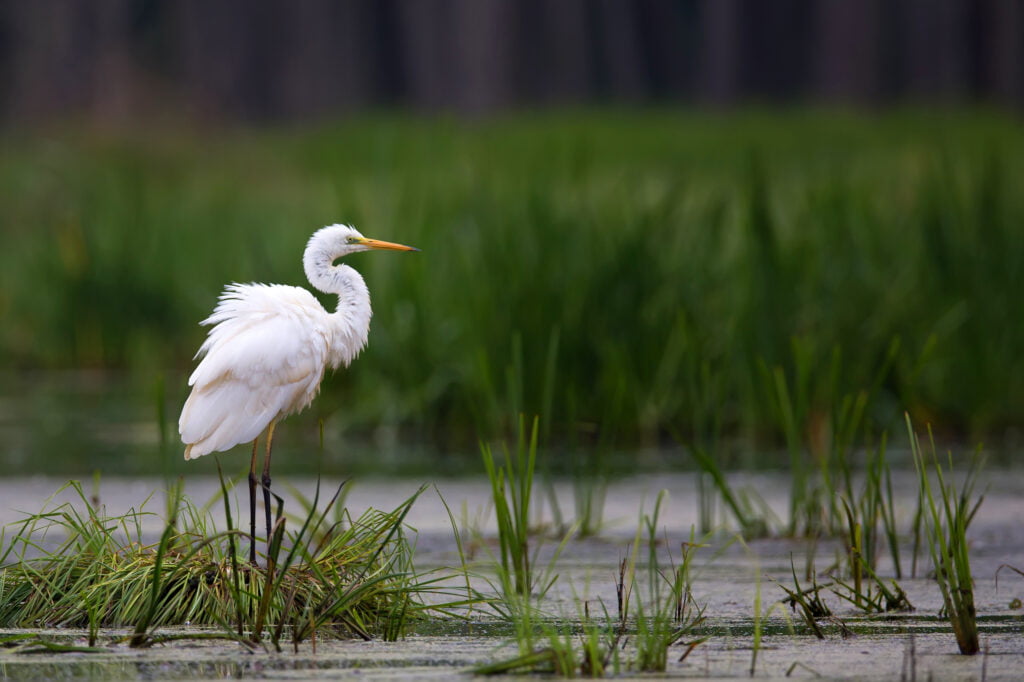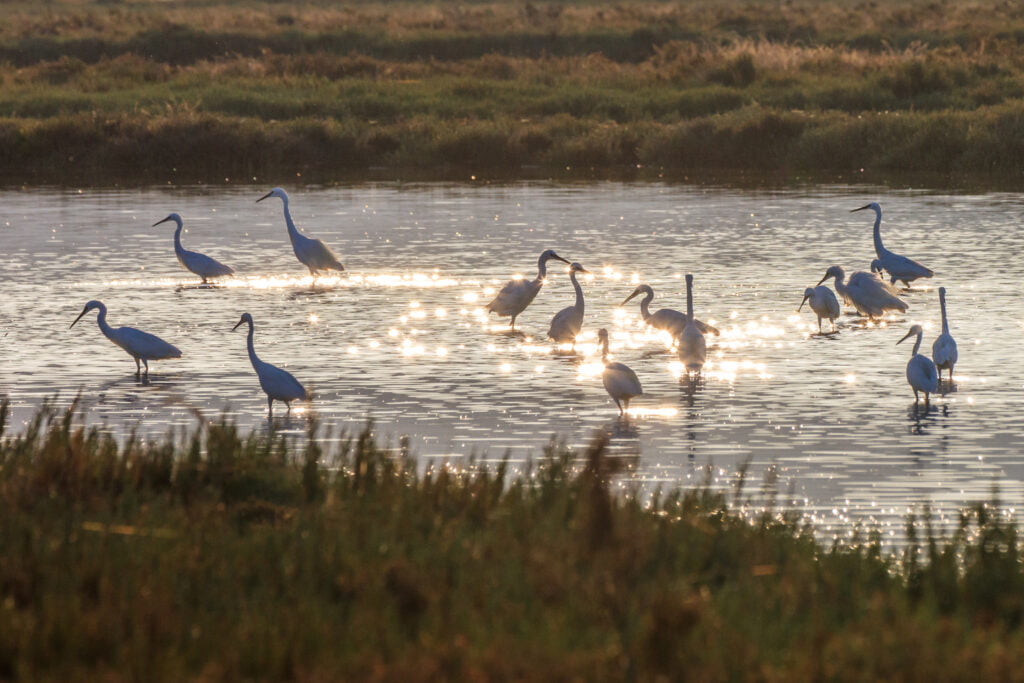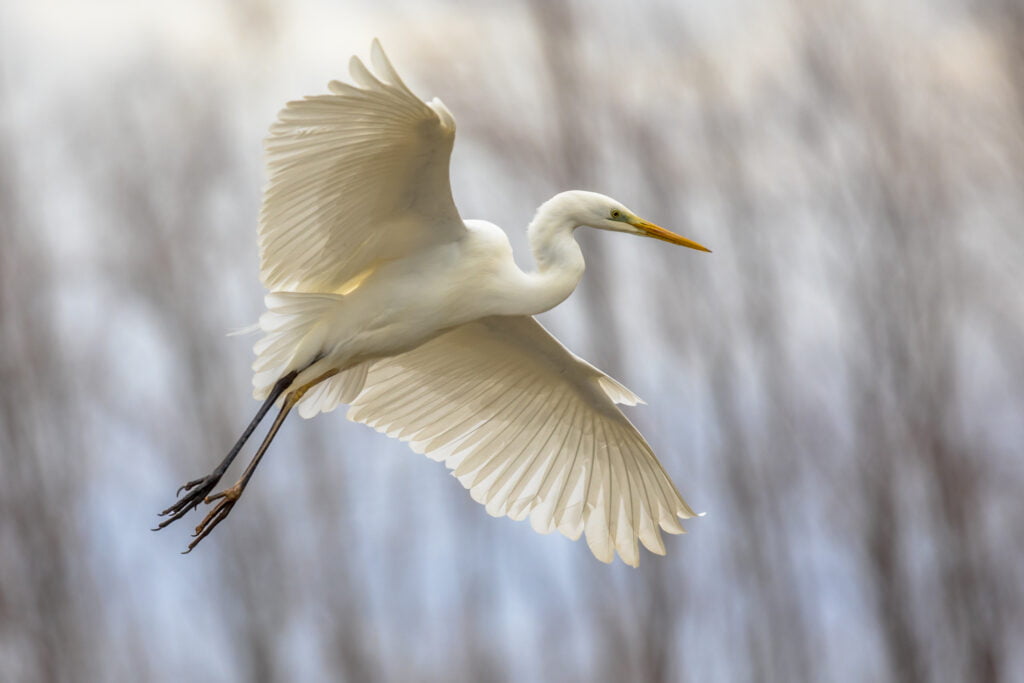15 Interesting Facts About Egret

The egret is a fascinating bird that can be found across the world near bodies of water. With their elegant white plumage, long legs and necks, and impressive fishing skills, these wading birds have captivated people for centuries. Read on to learn 15 interesting facts about these amazing birds!
1. There Are Several Types of Egret
The term “egret” refers to several species of herons that belong to the Ardeidae family. Some of the most common types of egret include:
While they share similarities, each species has unique features and behaviors. For example, the reddish egret has a distinctive two-toned pink and gray plumage.
2. They Have Impressive Fishing Skills
Egrets are carnivorous birds with adiet consisting mainly of fish, frogs, insects, and small aquatic animals. They have developed specialized hunting techniques to catch slippery prey in shallow waters.
When hunting, egrets walk slowly through the water watching for movement. Once they spot prey, they swiftly jab their long bills down to grab and impale their next meal. Their lightning-fast reflexes help them snap up fish and aquatic insects.
3. Their Bills Are Perfectly Adapted for Fishing

An egret’s long, pointed bill is a highly specialized tool perfect for spearing fish. The bill has a sharp tip and edges for easily piercing prey.
Their bills also have rough edges near the base to help grasp slippery fish. Some species even have notches on their bills to ensure speared prey doesn’t wiggle free.
4. They Have Impressively Long Legs
Egrets are known for their incredibly long legs in proportion to their bodies. Their legs make up 60% of their height!
Their long legs allow them to wade through deep water to find food. Air sacs in their legs also help them stay buoyant when walking through water.
5. They Have Long, Elegant Necks
In addition to long legs, egrets have extremely long, slender necks. Their necks are longer than their bodies and make up half their total length.
When flying, egrets retract their necks into an “S” shape. But when hunting, they extend their flexible necks to dart their bills into the water with lightning speed.
6. Their White Plumage Serves a Purpose

Most egrets sport beautiful white plumage and long ornamental feathers during breeding season. But their bright white color isn’t just for show – it serves an important purpose.
The white color camouflages egrets when they hunt in shallow waters. From below, their white feathers blend in against the bright sky, making it easier to sneak up on prey.
7. They Form Large Nesting Colonies
During breeding season, egrets form large nesting colonies called rookeries that can include thousands of pairs. Rookeries provide safety in numbers from potential predators.
Egrets build platform nests high up in trees located over water. Colony members work together to defend eggs and chicks from predators.
8. They Perform Elaborate Courtship Displays
Egrets have elaborate mating rituals and courtship displays. Males arrive at the rookery first to establish and defend their nesting territories.
When females arrive, males put on an elaborate show. They extend their plumes, spread their wings, and make loud calls to attract mates. Some species add in fancy steps, bows, and bill motions.
9. They Are Monogamous Parents
Egrets form monogamous pair bonds that can last for more than one mating season. Both the male and female share parenting duties like incubating eggs and feeding chicks.
The parents fiercely defend their nests from intruders and predators. Their coordinated efforts help ensure their chicks survive to adulthood.
10. They Are Highly Social

In addition to nesting in colonies, egrets are highly social birds outside of breeding season. They forage together in large groups that can include other species of herons.
Flocking together improves their fishing success. More eyes scanning the water means a better chance of catching prey. There is safety in numbers from predators too.
11. They Soar on Broad Wings
Though they appear elegant on land, egrets are powerful fliers too. They fly with deep, slow wing beats on their broad wings.
Egrets migrate in flocks between breeding and wintering grounds. Some species make remarkably long migrations across continents between seasons.
12. They Once Faced Endangerment
In the late 1800s, egrets were hunted to near extinction. Their long breeding plumes were in high demand for use in fancy hats and garments. Conservation laws helped populations recover.
Though no longer endangered, egrets still face threats like habitat loss. Protecting wetlands is crucial to preserving egret populations.
13. They Keep Their Feathers Sparkling Clean
Egrets work hard to keep their white plumage pristine by preening and spreading oil from a gland near their tails. This waterproofing helps their feathers stay dry.
You can often spot egrets preening and caring for their feathers while perched. Keeping clean feathers helps them stay insulated and buoyant.
14. They Inspired Folklore and Symbols

Egrets have inspired many stories, myths, and symbols across human cultures. Ancient Egyptians viewed egrets as symbols of the gods. Mayans linked egrets to fertility.
In some cultures, egret feathers symbolize purity, nobility, and grace. Egrets remain iconic birds featured in art, stories, and mythology.
15. They Are Widespread and Adaptable
Egrets are found on every continent except Antarctica. With wetland habitats dwindling worldwide, their adaptability helps them continue thriving.
They flourish near any water source and adjust their migrations and behaviors to survive. Protecting diverse wetland ecosystems supports egret populations.
Conclusion
From their specialized hunting adaptations to their ornate breeding displays, egrets are amazing birds. Their beauty and grace have captivated people for ages. Learning more about their behaviors and ecology reveals what exceptional creatures they are. Egrets serve as iconic symbols of wetland habitats worldwide. Supporting wetland conservation helps ensure the survival of these elegant white waders.

FAQ
How many species of egret are there?
There are several species of egret, including the great egret, snowy egret, cattle egret, little egret, and reddish egret. In total, there are around 10 species within the Egretta and Ardea genera.
Where do egrets live?
Egrets can be found on every continent except Antarctica. They thrive in wetland habitats like marshes, swamps, ponds, lakes, rivers, and coastlines. Their range depends on the species – some have very widespread distributions across multiple continents.
Why do egrets have white plumage?
An egret’s bright white plumage serves as camouflage when these birds are hunting. The white color blends in against the bright sky when viewed from below, making it easier for egrets to sneak up on prey in shallow waters.
How do egrets hunt?
Egrets are specialized hunters that use different techniques to catch fish, frogs, and other prey. They often wade through shallow water watching for movement. When they spot prey, they swiftly jab their long bills down to spear or grab their next meal.
Are egrets endangered?
Some egret species were hunted nearly to extinction in the 1800s for their decorative plumes. Conservation efforts helped populations recover. While no longer endangered, egrets still face threats like habitat loss. Protecting wetlands is key to preserving their populations.
How long do egrets live?
The average lifespan of an egret depends on the species. Most egrets live around 10-15 years in the wild. Some species like the cattle egret have been known to live 20+ years. In captivity, egrets may live even longer with fewer threats and ample food.





